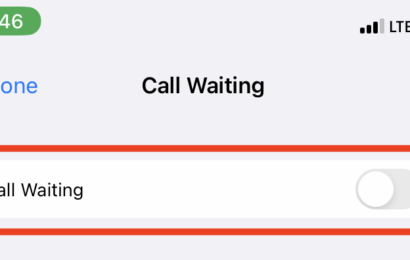Updates to Google’s apps and content might be sketchy without a Single Sign-On (SSO) implementation. Google relies on ogs.google.com to allow synchronized use of all its apps on one or more browsers at the same time.
ogs.google.com is a cookie commonly seen on Google Chrome browsers. It supports synchronized activity across all Google apps (Voice, Chat, Gmail, YouTube, etc.)
ogs.google.com is a vital part of your sign-in experience across Google apps on all devices. It is essential to understand what ogs.google.com stands for and how it works.
That’s why this article presents vital details about the relatively-unknown cookie and what it can do. In this article, you’ll also get information on how to locate ogs.google.com or block it if you want.
Table of Contents
What Does the OGS in ogs.google.com Stand For?
OGS in ogs.google.com stands for One Google Sign-In. It is an SSO implementation designed to allow users stay signed in to all Google-linked apps.
The domain supports users with a Google account to stay logged in at all times on trusted devices until sign out. ogs.google.com is a valid element of Google’s overall experience and its cookies are visible on any device you sign in to.
How ogs.google.com Works
Google’s ogs.google.com may not be the sexiest subdomain out there, but don’t let its unassuming name fool you – it’s an absolute powerhouse. This little guy serves as the gateway for users to access a variety of Google services without having to sign in multiple times. So whether you’re checking your Gmail on your computer and then want to switch over to YouTube on your phone, ogs.google.com has got you covered. It’s the ultimate multitasker, allowing us to effortlessly hop from one Google app to another with ease. Plus, it saves us time and the headache of constantly signing in and out. So give a round of applause (or at least a silent gratitude) for ogs.google.com – it may not be glamorous, but it sure is helpful.
Location for ogs.google.com Domain
The IP location linked to ogs.google.com domain is currently listed in the Mountain View area of California, USA.
Google also lists its ISP and Organization information over ogs.google.com. Tracker runs and malicious sandbox checks confirm that this domain is potentially safe to operate on Google Chrome browsers.
How to Find ogs.google.com on Your Browser
Step 1: Open your Chrome browser
Open your Google Chrome browser. The Google Chrome browser app is available on Windows, iOS, Android, Mac, and other operating systems.
You need to be signed into a Google account for ogs.google.com to operate on your browser.
Step 2: Go to Customize menu
Next, click on the three vertical dots at the top-right corner of your browser. Clicking on this button opens the Customize menu.
Step 3: Select Settings
The Customize menu has about a dozen different submenus. Select Settings from the list of options.
Step 4: Choose ‘Privacy and Security’
After tapping Settings, click on Privacy and Security. Tapping on Privacy and Security opens another submenu with different security-related settings.
Step 5: Go to ‘See All Cookies and Site Data’
Next, choose ‘See All Cookies and Site Data’ from all options under Privacy and Security. Selecting this option sends you to a different menu with the list of all cookies on your browser.
Step 6: Type ‘ogs’ in the Cookies search bar
After that, type ogs in the search bar provided to see the ogs.google.com in an instant. You can also view how many cookies the ogs.google.com domain currently has saved on your browser.
How to Block ogs.google.com from Your Browser
Step 1: Open your Chrome browser
Open your Chrome browser. The Chrome app is available on all devices You need to be signed into a Google account for ogs.google.com to work on your browser.
Step 2: Go to Customize menu
Next, click on the three vertical dots at the top-right corner of your browser. Clicking on this button opens the Customize menu.
Step 3: Select Settings
The Customize menu has about a dozen different submenus. Select Settings from the list of options.
Step 4: Choose ‘Privacy and Security’
After tapping Settings, click on Privacy and Security. Tapping on Privacy and Security opens another submenu with different security-related settings.
Step 5: Scroll to ‘Customized Behaviors’
Next, scroll to the bottom of your screen to see the Customized Behaviors submenu.
Step 6: Click Add
After that, tap Add to view a pop-up window where you can enter URLs of any domain you want to customize.
Step 7: Type htttps://ogs.google.com in the space provided and click Add
Next, enter htttps://ogs.google.com in the space and click Add. You will see the recently added domains under your Customized Behaviors menu.
Step 8: Click More submenu button
Click the More button next to your recently added URL (three vertical dots). After clicking Block, you will see different customization options of your newly added address.
Step 9: Select Block
Next, select Block to stop ogs.google.com from saving any cookies on your device.
Note that completing these steps doesn’t have any visible effect on your Google account operation. However, it is unclear if any problems might become obvious with subsequent updates.





